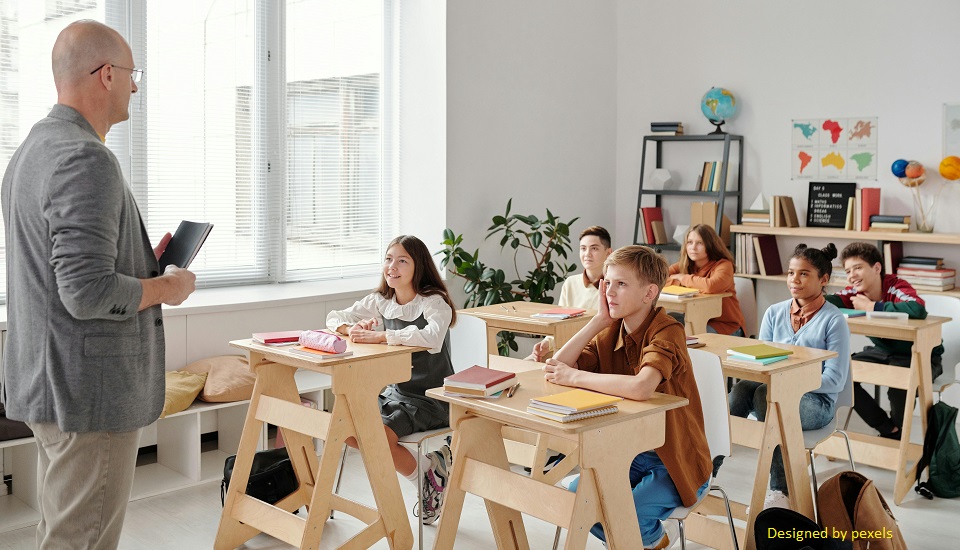Bite Engage Apply: The Art of Snackable Learning in Live Training
10th November 2025

In today’s fast-paced digital learning environment, attention spans are shorter, distractions are endless, and learners expect instant value. That’s why snackable content, short, easily digestible learning materials, has become one of the most effective strategies in online and live training sessions.
However, while bite-sized lessons grab attention, lasting learning requires reinforcement. To transform awareness into understanding, educators must pair snackable content with structured follow-up activities that deepen retention and encourage application.
This concept is particularly relevant for teachers pursuing a virtual teacher certification, as these programs emphasize how to design interactive, learner-centered sessions that balance brevity with depth.
Let’s explore how to effectively integrate snackable content with follow-up strategies that make live training truly immersive.
7 Effective Strategies for Integrating Snackable Content into Live Training
Integrating snackable content into live sessions isn’t just about making learning shorter, it’s about making it smarter. These six strategies help educators blend microlearning with interactive follow-ups to create engaging, high-impact training experiences.
1. Start with Purposeful Snackable Content
Not every piece of short content is effective, it needs to serve a clear learning goal. Snackable learning could be a short explainer video, infographic, interactive quiz, or micro case study designed to spark curiosity or introduce key concepts.
When planning your live session, identify one core takeaway for each piece of content. Keeping your materials goal-oriented ensures that learners retain essential information without cognitive overload.
Tip: A single, 2-minute concept video or visual slide can prime learners’ attention before diving into deeper discussion during live training.
2. Use Live Sessions to Expand and Apply Learning
The real power of snackable content comes alive during follow-up discussions. Use your live training to move from passive learning (watching or reading) to active engagement (doing and reflecting).
Encourage participants to:
- Analyze examples from the short content.
- Collaborate in small groups to solve a problem.
- Share reflections through polls or chat discussions.
This approach converts quick content into an interactive learning experience, improving both recall and participation.
3. Reinforce Key Takeaways with Follow-Up Activities
To ensure long-term retention, design short follow-up activities that revisit the key ideas from your snackable modules.
Some effective examples include:
- Reflection prompts: Ask learners to post a short takeaway on a shared platform.
- Mini challenges: Create 5-minute exercises that apply the concept in practice.
- Knowledge check quizzes: Use quick polls or gamified questions to assess understanding.
Follow-up activities keep learners engaged even after the live session ends, turning microlearning into continuous learning.
4. Incorporate Multimedia and Interactive Tools
Integrating technology keeps learners motivated and allows for diverse engagement styles. Tools like Padlet, Mentimeter, or Kahoot! Make follow-ups interactive, while breakout rooms in virtual platforms support collaboration.
Educators who pursue a diploma in virtual online teaching learn how to use these digital tools effectively to build learner autonomy, reinforce concepts, and personalize learning pathways.
5. Blend Synchronous and Asynchronous Learning
Snackable content works best when blended with both live (synchronous) and self-paced (asynchronous) experiences. You might:
- Share micro-content before the live session as a teaser or pre-task.
- Use the live session to discuss insights or clarify doubts.
- Assign post-session tasks to reinforce and apply knowledge.
This blended approach gives learners flexibility while maintaining consistency across the learning journey.
6. Encourage Reflection and Feedback
Learning becomes more meaningful when learners connect lessons to personal or professional experiences. Encourage reflection by asking questions like:
- What did you find most useful about the short content?
- How can you apply this in your work or classroom?
- What challenges might you face while implementing this?
Collecting feedback after the live training helps refine future sessions and measure how effectively your snackable content supports learning outcomes.
7. Evaluate Learning Impact
Assessment shouldn’t end with the activity. Use analytics from response tools, post-session surveys, or discussion forums to track learner progress and engagement. Compare responses from pre- and post-training activities to see how well learners have understood the material.
Educators undergoing virtual teacher certification programs learn to evaluate digital learning effectiveness through data-driven insights, ensuring every activity contributes to measurable growth.
Final Thoughts
Integrating snackable content with follow-up activities bridges the gap between engagement and mastery. Short learning pieces capture attention, while reflective and applied tasks reinforce understanding, creating a complete and dynamic learning experience.
For teachers and trainers, mastering this balance is a key skill in today’s online education landscape. By enrolling in a diploma in virtual online teaching, educators can gain the expertise to design impactful microlearning experiences that engage, inspire, and transform learners — one bite-sized lesson at a time.
Frequently Asked Questions (FAQs)
1. What is snackable content in online training?
Snackable content refers to short, focused learning materials, such as videos, infographics, or quizzes, that can be quickly consumed and easily remembered. It’s designed to capture attention and deliver key concepts efficiently.
2. Why is snackable content effective for live or virtual training?
Snackable content aligns with modern learners’ shorter attention spans. When used in live training, it keeps sessions dynamic and helps participants absorb information more effectively without feeling overwhelmed.
3. How can follow-up activities enhance snackable content?
Follow-up activities reinforce what learners just learned. Reflection exercises, mini-challenges, and interactive discussions turn passive viewing into active participation, deepening understanding and long-term retention.
4. What are some examples of snackable content educators can use?
Examples include quick explainer videos, one-slide infographics, bite-sized podcasts, polls, or short case studies. These elements can introduce or reinforce topics during live or virtual training sessions.
5. How can teachers learn to design snackable content effectively?
Educators can upskill through a diploma in virtual online teaching, where they learn how to design concise, engaging content and connect it with interactive activities for better learning outcomes.
6. Can snackable content be used in both synchronous and asynchronous formats?
Yes! Teachers can share snackable lessons before, during, or after live sessions. In asynchronous learning, they serve as quick refreshers; in live settings, they keep engagement high and discussions active.
Written By : Sanjana











